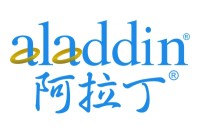Analysis of T-Cell Response Using Altered Peptide Ligands
互联网
877
T lymphocytes interact with protein antigens (Ags) in the form of peptides bound to self-major histocompatibility complex (MHC) molecules displayed at the surface of antigen-presenting cells (APC) (1 , 2 ). Dissection of the different T-cell receptor (TCR)-mediated functions elicited by peptide Ag stimulation is essential for understanding the mechanisms that govern T-cell immunity. Historically, it was believed that each individual T-cell clone recognized a single peptide, and T-cell activation was thought to be an all-or-nothing phenomenon. The current interpretation is that the exquisite specificity of T-cell recognition of a given peptide is not absolute, because of crossreactive T-cell responses with other sequentially or structurally related peptides (3 -7 ). Additionally, recent studies (8 , 10 ) using altered peptide ligands (APLs) or analog peptides displaying amino acid subsitutions at key TCR contact positions of the Ag peptide have revealed that TCR can interpret subtle modifications in its ligand, resulting in differential activation of T-cell functions.









